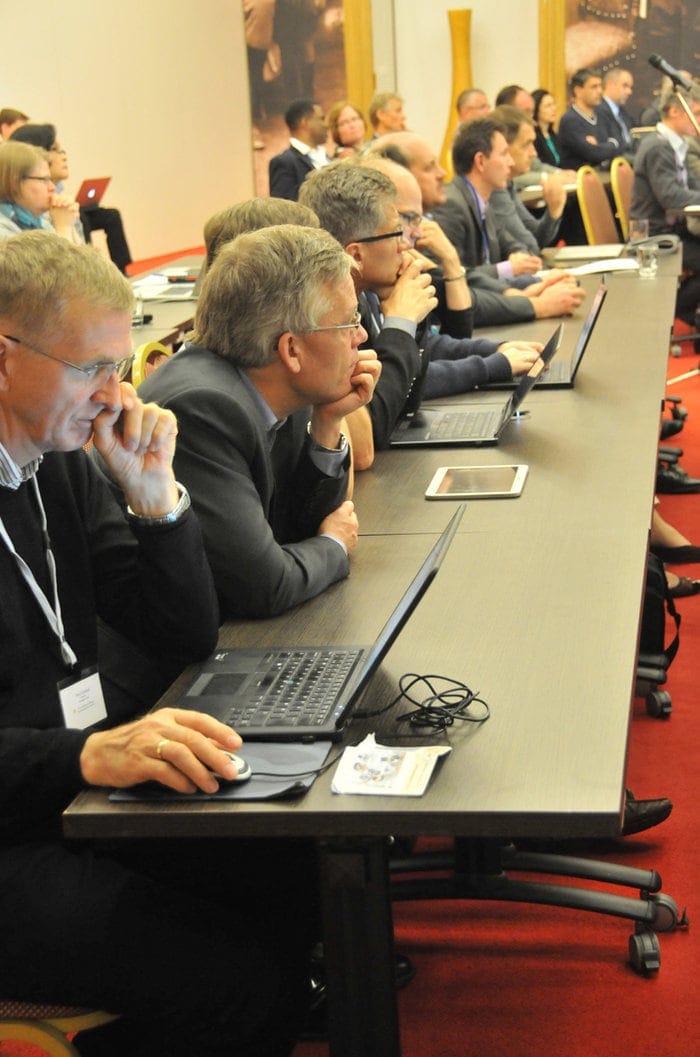
What do you do when you take over as leader of not only the smallest world division of the Seventh-day Adventist Church but also one compounded with severe growth challenges in a highly secularized Europe?
For Raafat Kamal, president of the Trans-European Division, the answer is simple: Listen!
And that is just what Kamal and his fellow officers have been doing for the past year.
Kamal, who was elected in July 2014 and then re-elected to a five-year term last July, told delegates at the division’s year-end meetings this week in Montenegro that many key people have passed through his office in St. Albans, England, over the past year. A focus group of 80 people spent four days together in February, drawing up a list of 123 recommendations, and smaller groups have continued to meet during the year.
Division leaders have been praying for wisdom on how to share the Adventist message of Jesus’ return in the 22 European countries on their territory, which stretches from Britain and Ireland in the west to Scandinavia in the north, Greece in the south, and Estonia and Bosnia-Herzegovina in the east. The division has only 85,000 church members.
The drawn-out listening process helped division leaders focus and select personnel based on five key areas: leadership development, youth, family, children, and mission outreach. Key leaders for those teams were elected during the General Conference Session in San Antonio, Texas, last July.
So with all the listening, thinking, and planning, what have those elected in July got in mind?
Division executive secretary Audrey Andersson, speaking of the Adventist Volunteer Service, said mission is needed locally as well as in far-flung parts of the planet.
“The spirit of volunteerism is alive,” she said.
She said, however, that short-term mission projects within the division might galvanize members into enthusiastic service for God while helping faith communities flourish.
Teens and Community Services director Alastair Agbaje said young people needed to be active not just Global Youth Day but the other 364 days of the year. He called for young people to participate in Centers of Hope, as church community centers are known in the division.

As each director got up to share his or her vision, the overlapping ideas of involvement became more and more clear.
“I believe that the time has come that our young people are serving with passion,” youth director János Kovács-Bíró said, speaking from recent experiences in Hungary and Sweden said.
He quoted a young professional couple as saying, “We have found it far better to be an administrator of God’s gifts than to simply receive them.”
Kovács-Bíró will be developing an institute of youth evangelism for the division to, like other division departments, train the trainers.
As each department presented, it was clear that a lot of thought had gone in to how to work together, how to prepare appropriately needed resources and, most important, how to train the trainers so that they in turn could multiply skills and activity across each union, conference, or mission. Among other things, Family Ministries will be developing an effective program on issues of biblical values and sexuality based on a pilot already tried in Sweden. Women's Ministries is continuing with a General Conference-accredited certification program while developing a “girls for Christ” ministry. Newbold College of Higher Education in England will become a hub to train trainers for teen leadership.
Even the Ministerial Association is getting a spruce up, with its secretary, Patrick Johnson, committing to practical help for pastors in areas of personal development.
“We are here to help you,” Kamal told union presidents and invitees. “We are a trainer of trainers. We want to make sure you have the right resources to do your task.”
There were questions. How, in practical terms, do you get team involvement? How do you balance training trainers within a local country context, or, from Ivo Käsk, president of the Estonian Conference, how do you simplify all these ambitious plans down into the context of a small conference?
But the overall mood was positive, even upbeat. Former General Conference president Jan Paulsen expressed his joy at having spent the year-end meetings with former colleagues and former students.
“I like what I see and I have one word,” he said. “Let the Holy Spirit speak to you through the Word. The Holy Spirit is the unlimited resource of the church.”